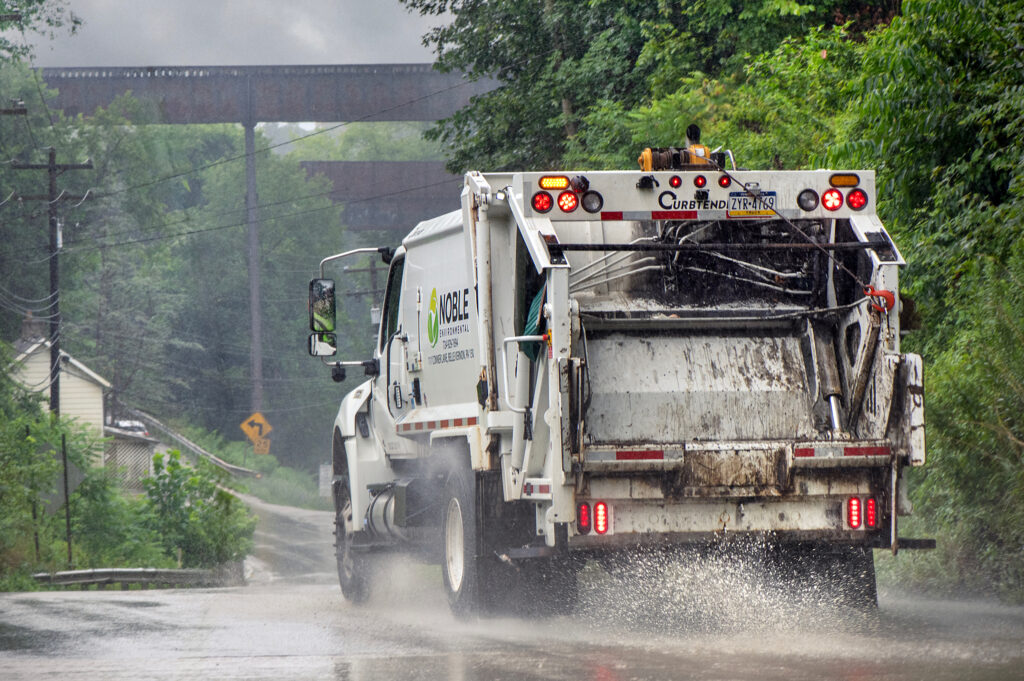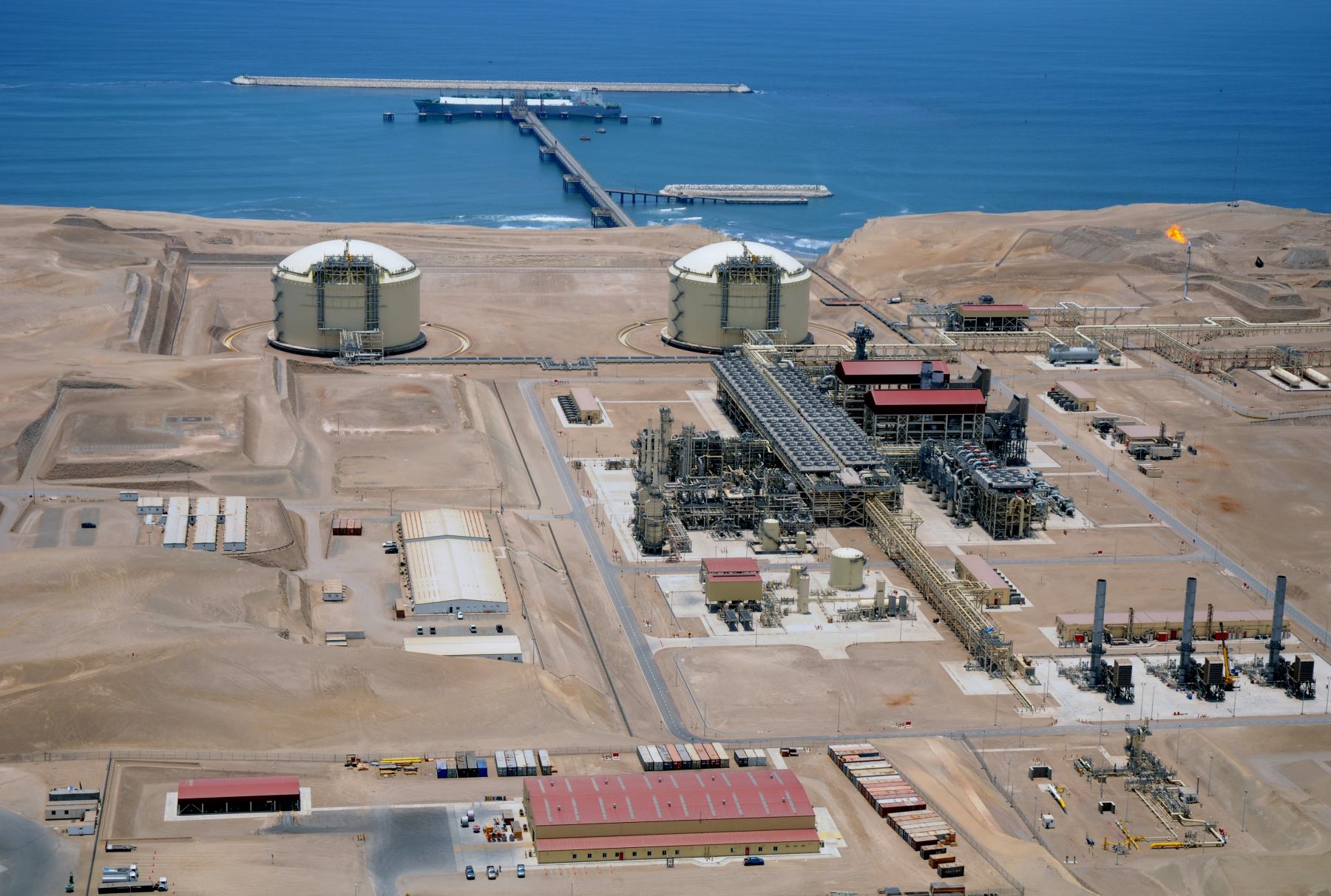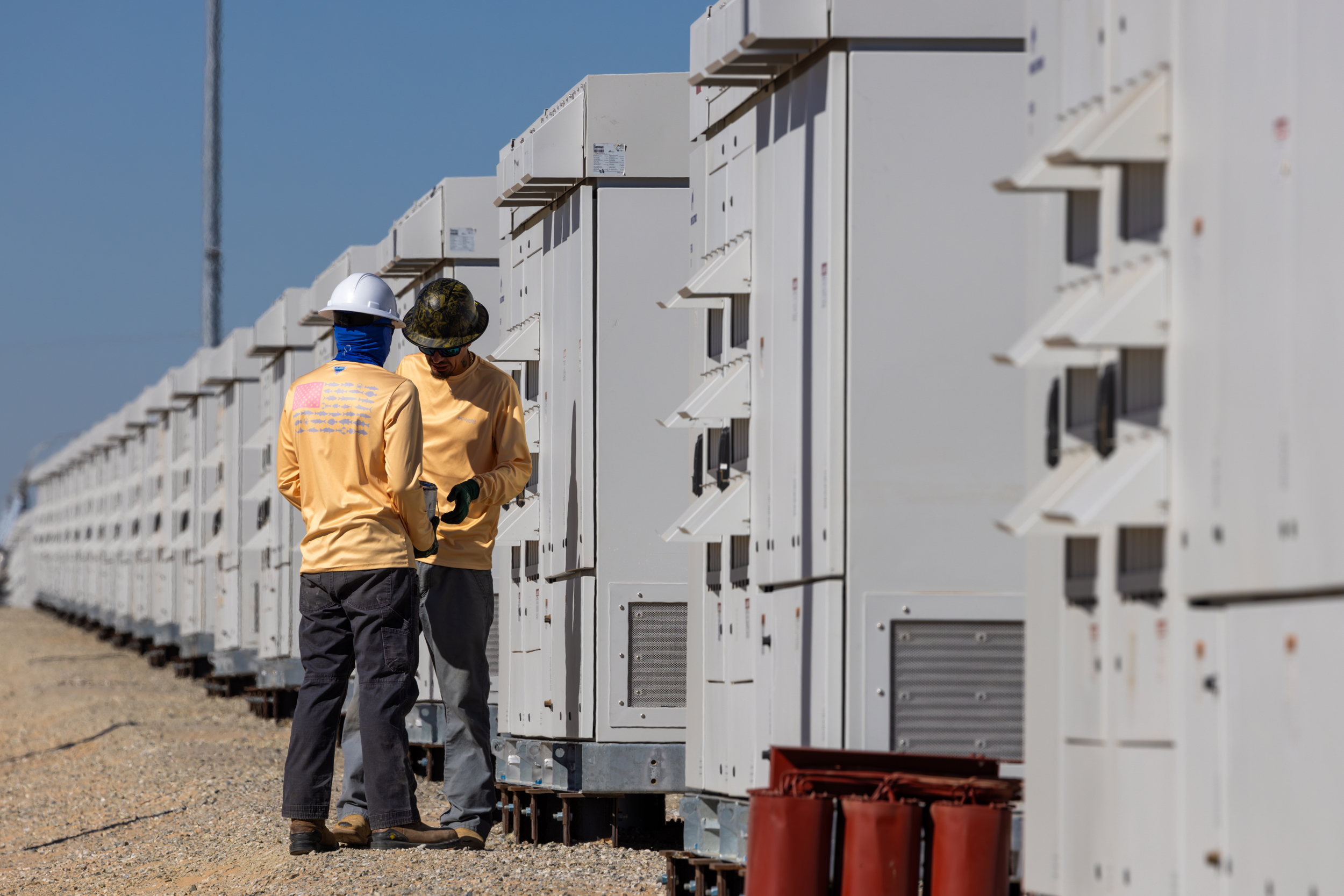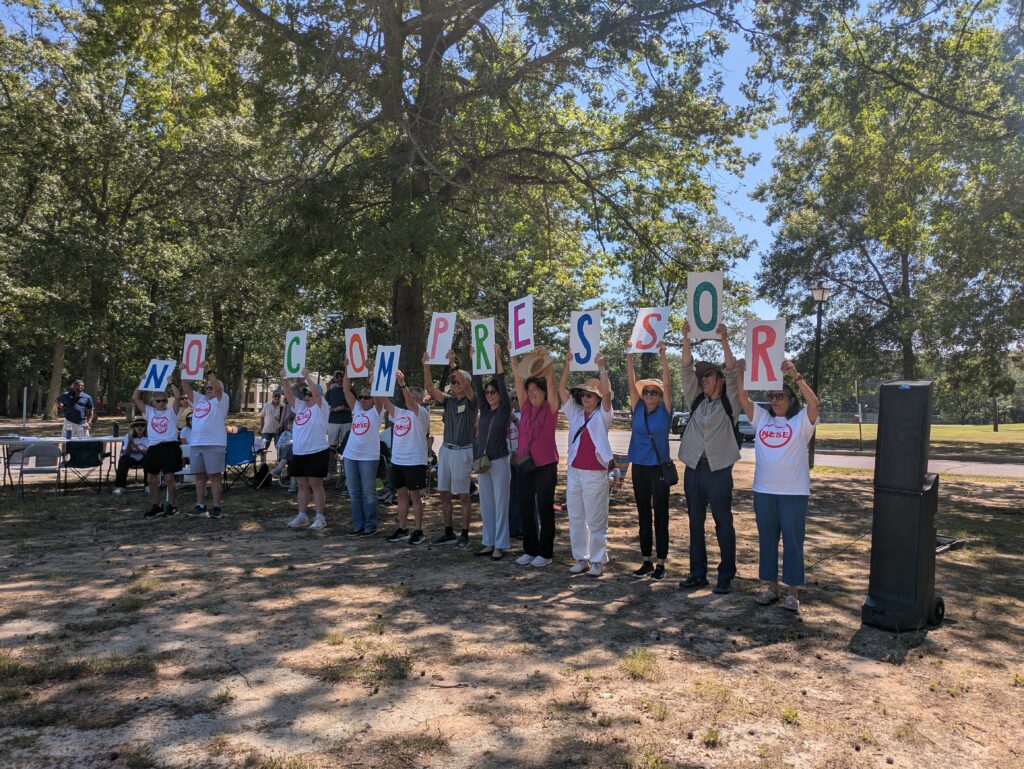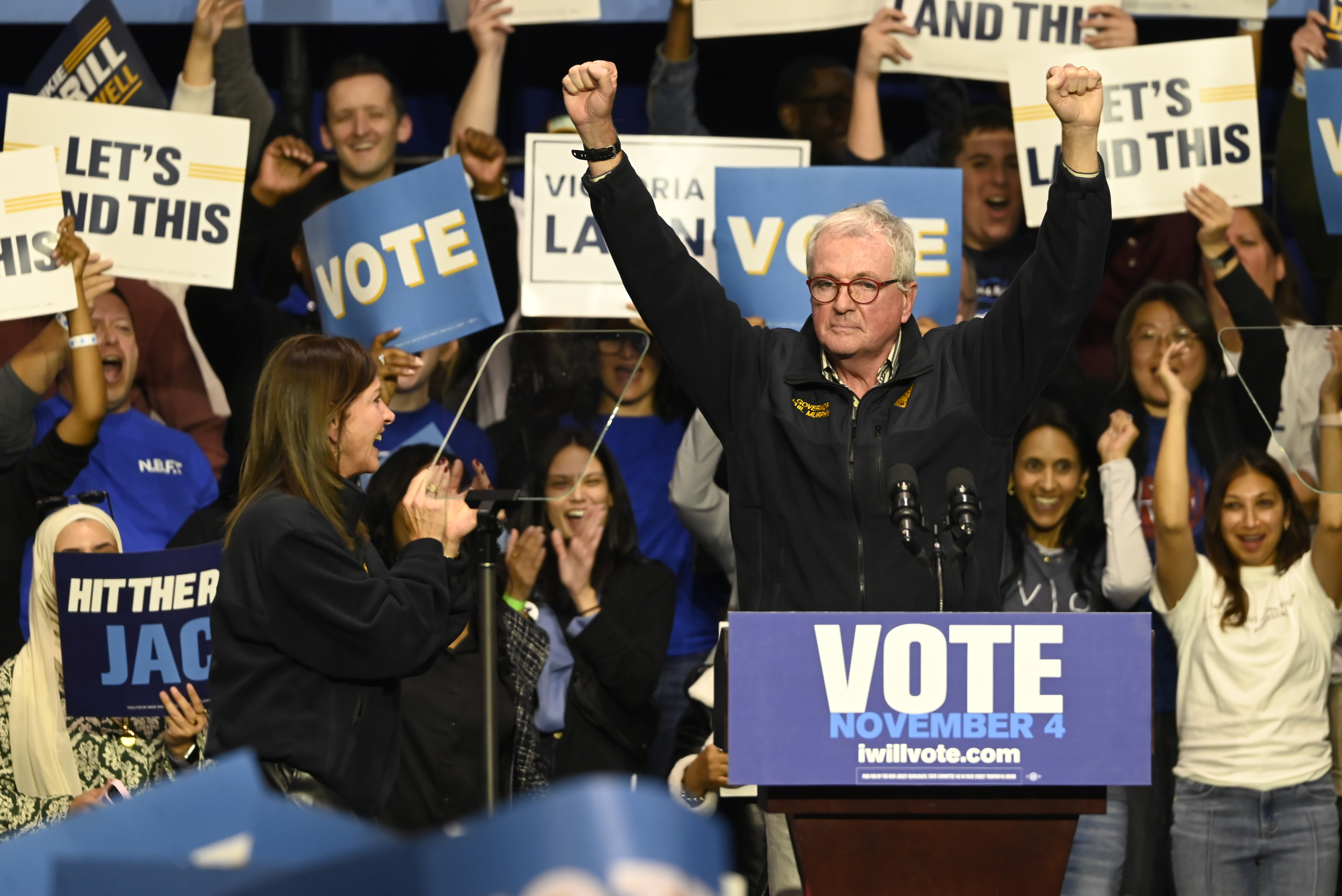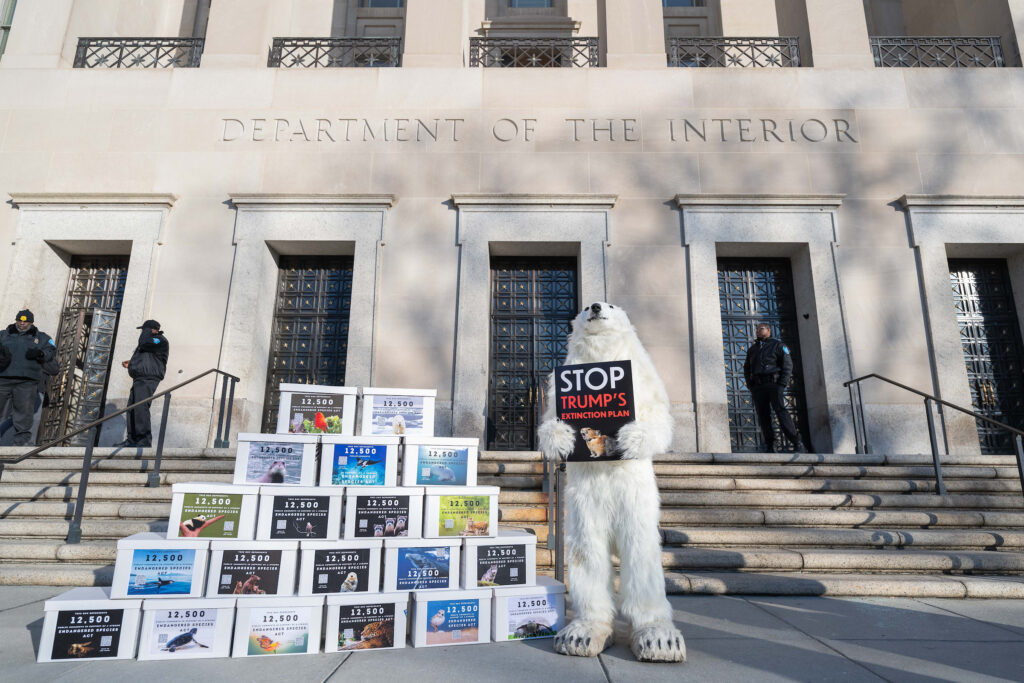When a massive explosion proved the death knell of a 150-year-old South Philadelphia oil refinery in 2019, nearby resident Mark Clincy chalked it up as a health victory for surrounding neighborhoods that long bore the brunt of its air pollution.
Then the trucks arrived.
Construction equipment and other heavy-duty vehicles go back and forth through Clincy’s predominantly Black neighborhood as the site is redeveloped into a warehouse hub. Among the tailpipe emissions from the vehicles is the carcinogen benzene, a problem that Clincy and some other residents fear could get exponentially worse once fleets of tractor-trailers and delivery vehicles arrive in earnest.
“[Truck emissions] are a big problem. … It’s frustrating,” Clincy said. “The trucks that they drive in: yuck. Something about the pollution from that diesel fuel. You have senior citizens living nearby, and they don’t need all that.”
The dynamic showcases the stakes at a critical juncture for federal efforts to reduce emissions from heavy-duty vehicles. The survival of Biden-era policies to drive down greenhouse gas emissions and other pollution from cars and SUVs—such as the $7,500 tax credit for new electric vehicles—have received significant attention in the runup to President-elect Donald Trump’s second term. But also at risk are lesser-known initiatives to address commercial and public transportation.
The implications are substantial. Transportation is the sector that produces the most greenhouse gas emissions in the United States; while more than half comes from private, light-duty vehicles, nearly a quarter is spewed by medium- and heavy-duty trucks.
The Biden administration has worked to decarbonize the sector by rolling out a policy menu of carrots and sticks to ratchet down emissions from large commercial vehicles. Incentives have included billions of dollars of investments made under the Bipartisan Infrastructure Law and Inflation Reduction Act, including $40,000 tax credits for purchasing electric heavy-duty trucks and buses.
“The combination of those two big legislative pushes have been pretty transformative,” said Sue Gander, director of the electric school bus initiative for think tank World Resources Institute.

Meanwhile, under Biden, the U.S. Environmental Protection Agency (EPA) has crafted policies such as new rules on the tailpipe emissions of big rigs, while issuing waivers to California regulators to pursue industry-shaping policies of their own. While legislative measures would ostensibly require congressional action to repeal, agency actions would be easier for the Trump administration to do away with, said Guillermo Ortiz, senior clean vehicles advocate for the Natural Resources Defense Council.
“We have an administration coming in who has publicly cast down the Inflation Reduction Act, the infrastructure law, electric vehicles as a concept. Right when we’re about to enter the transition, you’ve got someone who is going to slam on the brakes,” Ortiz said.
Indeed, Chris Spear, president for industry group American Trucking Associations, told trade publication Transport Topics in early January that he was expecting a change in course after meeting Trump last year and discussing “overbearing timelines and targets” for his industry, particularly those underway in California.
“I feel very confident that we’re going to see waivers being revoked and a new direction being taken with respect to environmental stewardship,” Spear told the publication.
ATA officials did not respond to multiple inquiries from Inside Climate News to further discuss their expectations. Trump’s transition team also did not respond to requests for comment.
Steve Viscelli, an economic sociologist at the University of Pennsylvania who specializes in the trucking industry, is skeptical that policies put into place under Biden will lead to dramatic reductions in greenhouse gas emissions in the sector even if they’re allowed to continue. That’s in large part because many of the nation’s 3.5 million truck drivers currently work as independent contractors and own their own trucks, which leads to logistical and capital hurdles to EV adoption.
“Right when we’re about to enter the transition, you’ve got someone who is going to slam on the brakes.”
— Guillermo Ortiz, Natural Resources Defense Council
If there’s a silver lining to be found in a Trump administration hostile to the electrification of heavy-duty vehicles, Viscelli said, it’s an opportunity to refocus policy efforts more holistically instead of “overlaying” them on top of an already inefficient system.
“We’re on our back foot, policy-wise,” Viscelli said. “But there are some of us who want to try and figure out legislative strategies to get red-blue work going on the congressional side, to chip away at some of the key problems.”
The Tailpipes on the Bus Go Bye, Bye Bye
When officials gathered last October to celebrate new federal funding for electric buses at an elementary school in Philadelphia—a few miles away from the former oil refinery—the big moment was a little anticlimactic. With the hood of an electric bus cracked open and School District of Philadelphia Superintendent Tony B. Watlington Sr. standing nearby, a driver pressed the start button, but nothing appeared to happen. Where normally a diesel engine would sputter loudly to life and begin belching exhaust, the electric motor was silent and gave off no smoke signal of its activation.
Of course, that’s the point, Watlington said, in a city where more than one in five children suffer from asthma, nearly fourfold the national average.
“It’s important that our young people have access to healthy ways to get transported around the city and to school. I was one of those kids who suffered from childhood asthma,” Watlington said, adding that he also drove a school bus earlier in his career.


World Resources Institute’s Gander said the electrification of school buses might be the most significant Biden-era transformation within the heavy-duty vehicle sector. The EPA’s Clean School Bus Program received about $5 billion in Inflation Reduction Act funding to replace existing diesel buses with “zero emission” models through 2026. To date, it has awarded $3 billion in grants, enough to replace about 9,000 buses, with the next round of awards currently scheduled for May 2025.
That’s just a fraction of the nation’s estimated 450,000 school buses. But, Gander said, the program is a “game changer” when paired with other Biden-era efforts, such as an unlimited $40,000 tax credit under the IRA for districts to purchase electric buses, and policy and financial support for utilities to improve the grid and charging infrastructure. She’s unsure whether such measures will survive a Trump administration, but wonders whether the implications for children—and Republican congressional districts benefiting from increased manufacturing—could provide a bulwark.
“Starting on day one, could there be some kind of freeze on funding?” Gander asked. “I wish we did know. … That’s what everybody is looking for. You’re just hoping that you’re on the right side of things.”


In December, the EPA also announced $735 million in IRA funding for a new Clean Heavy-Duty Vehicles Program, which widens the applicant pool from just buses to owners of all Class 6 and 7 vehicles, from single-axle box trucks to tractor-trailers. That’s enough money to replace about 2,400 vehicles across the country, along with paying for some fueling infrastructure and workforce development.
“Many of these are older vehicles that emit higher levels of harmful pollutants like nitrogen oxides, fine particulate matter, and greenhouse gases … associated with respiratory and cardiovascular disease, among other serious health problems,” the EPA told Inside Climate News in a statement. “Cleaning up pollution from heavy-duty vehicles helps protect the health of 72 million people living near truck freight routes in America.”
The impact of such financial incentives pales in comparison to regulations issued under the Clean Trucks Plan, a separate EPA initiative launched in 2021, which NRDC’s Ortiz thinks is even more vulnerable to rollback under the new Trump administration. Under the plan, the EPA has finalized three federal rules focused on ratcheting down pollution from new light-, medium- and heavy-duty trucks starting with model year 2027. Once fully implemented, the agency estimates the rules will avoid 1 billion tons of greenhouse gas emissions over three decades.
This story is funded by readers like you.
Our nonprofit newsroom provides award-winning climate coverage free of charge and advertising. We rely on donations from readers like you to keep going. Please donate now to support our work.
Donate Now
Complementary efforts have also been made elsewhere in the administration, Ortiz noted, such as the Department of Energy’s SuperTruck initiative to find locations for the buildout of EV charging stations for heavy-duty trucks near commercial traffic hubs.
“So it’s not just about the dollars, it’s not just about the regulatory framework, it’s also about the planning and bringing stakeholders together to understand the direction the country is headed,” Ortiz said. “And [Trump] could basically weaken standards a lot more for higher-emission vehicles and slow industry progress on zero-emission vehicles in particular.”
Also in question are a series of Clean Air Act waivers the EPA has issued to allow California to enact more stringent air regulations than its federal counterparts, something the state’s Air Resources Board has a long history of doing. In recent years, that has included an Advanced Clean Trucks rule and Advanced Clean Fleets rule, both of which aim to transition commercial trucking toward zero-emission models, as well as an “Omnibus” regulation to reduce the nitrogen oxides from heavy-duty vehicles that contribute to smog.
Due to California’s large size and the fact that about a dozen states automatically adopt its standards, the regulations impact about a quarter of heavy-duty vehicles across the country, according to the Air Resources Board.
The EPA approved waivers for the Clean Trucks rule in spring 2023 and the Omnibus regulation in December 2024; a waiver for the Clean Fleets rule remains pending as of early January, according to the EPA. Whether any will survive the second Trump presidency is in doubt.
Although there is no legal precedent for rescinding such waivers after they’ve been issued, the first Trump EPA attempted to do so in 2019, before being reversed by Biden in 2021. The fate of these waivers will likely be determined in court, experts say.
Asleep at the 18-Wheeler
For Viscelli, who researches commercial trucking at the University of Pennsylvania, analysis of which Biden policies may stay or go under Trump misses a bigger picture.
“The policymakers are basically too timid to say, ‘We actually need to change the way trucking works,’” Viscelli says.
His 2016 book “Big Rig: Trucking and the Decline of the American Dream,” makes the case that the commercial trucking industry suffers from many inefficiencies following a deregulatory era that pushed costs from logistics companies to independent contractors and inexperienced employees, not unlike the shift from taxi cabs to Uber and Lyft gig drivers. That’s a major reason the industry has been slow to embrace fuel-efficiency technologies available for decades, Viscelli said: The companies with the resources to widely adopt them have less incentive for doing so.
As it stands, many tractor-trailers drive a complete route with their load, cruising on highways and then crawling through urban destinations. That has downsides for the drivers, who are often paid by the mile and not the hour, and so have more incentive to drive through a fuel-burning traffic jam than stop and wait for rush hour to pass. When they finish their shift, they often drive the truck home and park it.
All of this leads to hurdles for electrification, Viscelli said. The costly investment of buying a more aerodynamic or zero-emission truck has less return on investment for a driver who can’t use it 24/7 than it does for a company incentivized to constantly relay it between drivers.
Instead, Viscelli believes the industry should shift to a two-tiered system, where highly aerodynamic 18-wheelers cruise for long hauls on the highway system, then transfer their trailer to electric cabs for urban delivery. Another driver would use the first truck to run a return route, and the transfer points would also provide an efficient place to install charging infrastructure.
This system would take a major overhaul, Viscelli said, but also offer much more bang for the buck in lowering greenhouse gas emissions and other pollution than the current strategy.
“Biden’s plan was to, you know, just throw more money at the system as it currently exists,” Viscelli said. “Sure, we’re going to get some adoption, but it’s not going to be near what we could get if we had these operational changes.”
About This Story
Perhaps you noticed: This story, like all the news we publish, is free to read. That’s because Inside Climate News is a 501c3 nonprofit organization. We do not charge a subscription fee, lock our news behind a paywall, or clutter our website with ads. We make our news on climate and the environment freely available to you and anyone who wants it.
That’s not all. We also share our news for free with scores of other media organizations around the country. Many of them can’t afford to do environmental journalism of their own. We’ve built bureaus from coast to coast to report local stories, collaborate with local newsrooms and co-publish articles so that this vital work is shared as widely as possible.
Two of us launched ICN in 2007. Six years later we earned a Pulitzer Prize for National Reporting, and now we run the oldest and largest dedicated climate newsroom in the nation. We tell the story in all its complexity. We hold polluters accountable. We expose environmental injustice. We debunk misinformation. We scrutinize solutions and inspire action.
Donations from readers like you fund every aspect of what we do. If you don’t already, will you support our ongoing work, our reporting on the biggest crisis facing our planet, and help us reach even more readers in more places?
Please take a moment to make a tax-deductible donation. Every one of them makes a difference.
Thank you,






